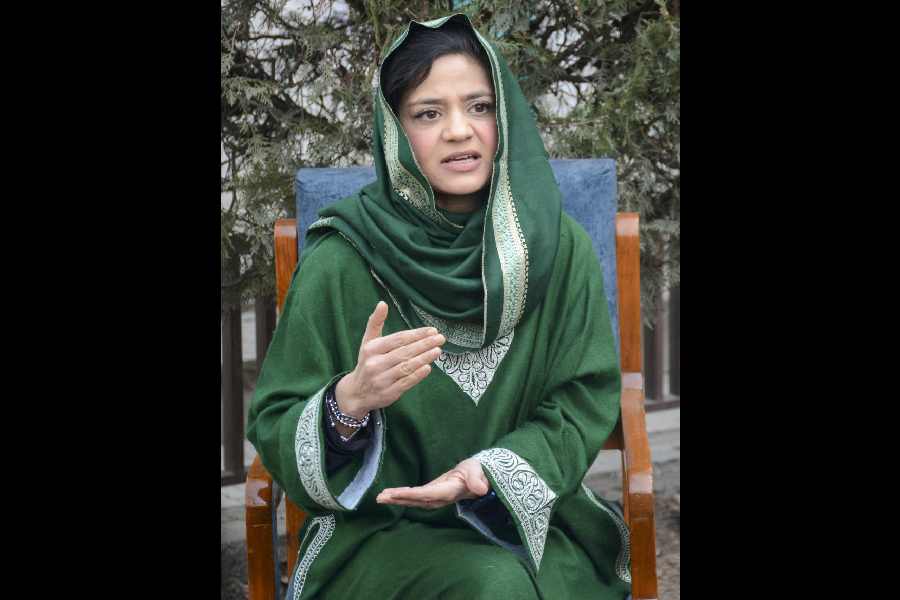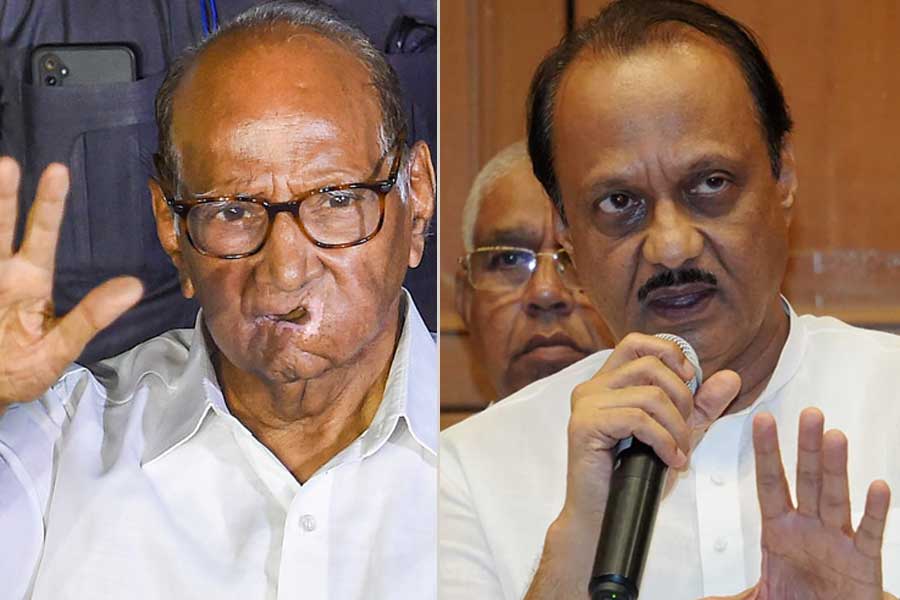 |
| TOO SOON? Teens and tweens are now more body conscious than ever. |
A couple twirls to the languid strains of Labon ko labo pe sajao, and executes erotic tangles in a froth of candy yellow costume. It’s only a bit later that you realise that the girl is no more than 14 or 15. But her movements are adult, knowing, and she deftly matches step with her older male partner in this slow tango of love in Zee Bangla’s talent hunt show Dance Bangla Dance Dhoom Dhamaka.
Cut to 9X channel’s ongoing children’s reality show Chak De Bachche. An 11-year-old girl and a small boy are gyrating to Tu Cheez Badi Hai Mast Mast, the Akshay Kumar-Raveena Tandon scorcher from the 90s film Mohra. They sing the duet in their childish voices. The little boy does his best to mimic the hunky Akshay Kumar, thrusting his pelvis in time with the music. And the little girl shakes her diminutive upper body and grinds her tiny hips as mightily as she possibly can.
Welcome to the glittery world of kiddie glamour, a world where children are on display as saucy little things who can play any adult role with élan.
But, wait, this happens only in show biz, right? Well, not quite. For these reality shows epitomise the seismic shift in the way urban Indian children view themselves today. They know that they are never too young to make a grab at glamour. They want to look hot, and act hot, and with a little help from their parents, they are making sure that they do. This is India’s Generation Now, and they are fast-forwarding the process of growing up in their hunt for the body beautiful.
Consider Manvi Biswas, 14, who studies in Class IX in a Delhi school. She goes to a beauty salon regularly to get a full body wax done so she can wear her skimpy outfits and show off her smooth limbs. She is not averse to showing a bit of cleavage either when she is not dressing for school. Manvi goes to the gym three times a week to keep her tendency to fat in check. She has experimented with hair extensions and now wants to sport a tattoo — “a permanent one” she tells you.
 |
| Talent show topper Ananya Shukla |
Why a tattoo, you ask her, at the risk of sounding uncool. “Because it’s sexy,” she shrugs insouciantly.
Ananya Shukla is not even a teenager yet. A regular at talent hunt shows – she was a finalist at this year’s Boogie Woogie Little Star Championship contest on Sony — the 10-year-old Mumbai kid is a regular at beauty parlours too. Cute and astonishingly articulate, she says that she goes for hair spa, hair massage, manicure, pedicure and fruit facials. “She is conscious of her looks,” admits her proud mother Gurpreet Kaur.
The government recently announced that kids’ talent hunt shows would now come under the scanner for the exploitation of children. To Kaur, though, they are merely a great platform to launch her child in the glamour business. And Ananya too is serious about that business. Having already done several TV commercials, and acted in four films, she says that she wants to grow up to be a Miss Universe.
But kids with humbler goals are no different from Ananya. They may not be planning a career in show biz, but they too are convinced that they’re always on show. As 16-year-old Dripto Barman, who has been working out in a gym to build up some muscle, puts it, “Looking good is pretty important to me.”
What amazes teachers, and sometimes parents too, is not that adolescents are becoming aware of their body image — and dare we say it — their sexuality. What amazes them is that they are becoming aware of it so soon. Says Shormi Barrow, who teaches the piano in Calcutta and has several teenagers in her choir, “I find that girls as young as 14 or 15 will do anything to look trendy — bare a belly button, or a cleavage. They are almost never dressed casually. In fact, even little boys come with gelled and spiked hair these days.”
But it is not just children who want to be primped and polished to perfection. Many parents too go out of their way to give their kids a leg-up in the looks department. And if nature has been unkind, they don’t hesitate to resort to art. In fact, cosmetic surgeons say that they regularly get requests from parents to correct “flaws” in their children’s appearance — flaws like a flat nose or prominent ears, or even male breasts. Apparently, boys feel embarrassed when they go swimming if they have a flabby chest.
Bangalore-based plastic surgeon Dr S.A. Surindher recently conducted surgery on a 14-year-old girl to reshape her large ears. “Her parents complained that her ears had made her a butt of jokes in school,” he says. Surindher also reveals that in the last five years he has seen a three-fold increase in the number of early teens going in for non-surgical procedures like a chemical peel to improve their skin tone.
Dr Kaushik Nandy, consultant cosmetic surgeon, Apollo Gleneagles, Calcutta, too says that many teenagers come to him to get their nose reshaped and enhanced.
So whatever happened to old-fashioned childhood — when you ran around with skinned knees and unkempt hair, when, even if you had a flat nose or jug ears you couldn’t care less about it? For many affluent urban teens and tweens, that kind of childhood is clearly as obsolete as the sailor suit that daddy wore in his baby pictures. At Transcend beauty salon in Calcutta’s Tollygunge Club, hairdresser Md Asif Iqbal says that nowadays 12-year-old girls ask for “creative” haircuts — something different from the run-of-the-mill. And boys as young as nine or 10 want a funky crew or a spike. Moreover, it’s quite common for 13 or 14-year-old girls to come for full waxing, manicure (including the fancier, French manicure where the tips of the nails are polished to a chalky white), pedicure, hair massage, acne treatment, hair extensions etc. “Yeah, I got hair extensions done,” says Kanika Issar, 15, a student of Class X. “But that was, like, last year,” she giggles. “Now younger girls are doing it.”
How does one describe these teens and pre-teens who are coolly reaching for nearly every adult trick in the book to look their shiny best? Too precocious for comfort? Or are they just a product of their times?
Social scientists tend to believe that it’s the latter. Bula Bhadra, head of the department of sociology, Calcutta University, says, “It’s a global phenomenon. After all, in capitalism, the body is the highest commodity. Everyone worships the body — the media, the parents, and, therefore, the children too.”
Bhadra feels that children’s talent hunt shows on television are symptomatic of this trend. “Forget dance shows, the way a child is groomed and presented even in a singing contest is revealing. The message seems to be that even if you want to sing, you have to look good.” In other words, the emphasis is always on the form rather than the substance, the outer rather than the inner.
Agrees Anjali Issar, Kanika’s mother, “There seems to be a whole industry of titillation which is telling young people that their bodies are more important than their minds.” Issar points to a newly launched show on MTV called Splitsvilla where 20 skimpily-clad girls preen and parade before two boys who sit back and appraise them. “Given that most teens watch MTV, what will they learn from this,” she asks.
It isn’t just MTV, though. Parents who are not enthusiastic participants in their children’s hunt for all that’s trendy are often deeply disturbed by the way the media sometimes sexualises them. When a little girl shakes and shimmies to a Crazy Kiya Re, for instance, “it encourages a kind of voyeurism and encourages people to look at her as a sexual object,” says Nilanjana Gupta, director, School of Media and Communication, Jadavpur University.
Indeed, a common charge against these shows is that by sexualising children they could also be fuelling child abuse. However, opinion is divided on this. As Calcutta-based psychiatrist Debashis Ray points out, “If you have a paedophile vision you will see children everywhere as sex objects. You don’t need a talent hunt show to bring it on.”
The bottomline, though, is that whatever the reason — the media, parents dazzled by the incipient sexiness of their kids, peer pressure, or a combination of all these — children today are under a kind of compulsion to keep their ‘hot’ quotient on perma high.
This could spell the end of childhood as we know it. And experts say that may not be such a good thing. Dr Sulata Shenoy, child psychologist at Bangalore’s Sagar Apollo Hospital, says, “Children whose childhood has shrunk don’t make good adults. By the time they reach their 20s, they have experimented with everything and there’s nothing left to explore. This could lead to dysfunctional behaviour.”
But that’s typical adult hand-wringing over gloom and doom, our teenyboppers will grimace — and reach for their pizza or their push-up bra.










